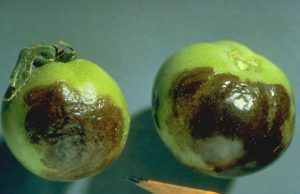
My cucumbers are thriving! Over the last two days I have cut enough cucumbers to make a batch of pickles.
I love to make dill pickles, but my recipe is a little different from some you may have seen before.
Most people have a favorite pickle recipe that uses vinegar. I say anyone can buy a jug of vinegar and make pickles.
I love learning about the history of food, and making pickles by this method is one way our ancestors preserved their harvest before the modern era.
I recommend that you taste these every couple days. I usually taste after 3 days, and find that 7 days is usually as long as I like to let them ferment. Don’t freak out if you find mold growing on top of the brine. That is normal. If mold develops, just skim it off. The most important thing to remember is to keep everything below the brine. If the cucumbers float to the top and are exposed to air, they will rot.
Dill Pickles (lactose fermentation method)
Lactose fermentation is an ancient method of preserving food. It is the same process used to make sauerkraut in many cultures. Lactic acid produced from fermentation and salt prevent the growth of bad bacteria. At the same time, it produces good bacteria that is very probiotic and is very good for digestion. The recipe produces a half-sour dill pickle that is like a Claussen pickle found in the refrigerator section of the grocery, or like the traditional kosher dill in an authentic Jewish deli.
Fermented pickles can be made in any kind of food grade container. A food grade 5 gallon bucket, crock, or a barrel can be used if you have enough cucumbers. Also, the method can be applied to any kind of vegetable, not just cucumbers. For my pickles, I use wide mouth glass quart canning jars
The basic recipe requires cucumbers, canning salt, distilled water, dill weed, and garlic cloves. You can add other ingredients if you want. DO NOT use chlorinated tap water or iodized salt as they inhibit fermentation and your pickles will rot.
Ingredients (per quart jar)
1 large pot for boiling water that a quart jar will fit into
1 wide mouth quart jar
1 half pint glass jelly jar
2 cups of distilled water
3 tablespoons of canning salt
1 teaspoon of mustard seed.
1 teaspoon of black pepper corns
1 teaspoon of pickling spice
3 cloves of garlic peeled
2 dried or fresh cayenne chilies
I head of dill weed
2 small bay leaves, one oak leaf or grape leaf (the tannins in the leaves ensures crispness)
6 or 7 pickling cucumbers 3 to 4 inches long
Directions
Wash and scrub the cucumber. You can use tap water for this, but do not use soap. Fill a large bowl with cool tap water and soak cucumbers overnight so that they are well hydrated.
Heat the distilled water slightly and dissolve 1 tablespoon of pickling salt into each cup of water. The amount of water will vary depending on the volume of cucumbers in the jar. I always make 2 cups of brine per quart of pickles (If using Kosher salt or Sea salt, add one tablespoon and 1 teaspoon per cups of water due to the size of the salt crystals). Let the brine cool.
Boil water in a large pot and sterilize your quart canning jars and half pint jelly jars. Remove from the water and let cool.
While jars and brine are cooling, cut the ends off of the cucumbers (the blossom ends of the cucumbers contain genetic material that tells the cucumber to rot). This will help the pickles stay crisp. Depending on size, half or quarter the cucumbers length wise. You can make pickle chips, but it is imperative that the cucumber stay beneath the brine, and chips will easily float to the top of the jar.
Place all of the ingredients in the bottom of the jar, and then turn the jar slightly sideways and begin packing the cucumber spears or halves into the jar. The idea is to pack them very tight so they do not float.
Once the jars are filled with all ingredients and cucumbers, pour the brine into the jar until it is one inch from the mouth. Place the jelly jar on top of the cucumbers to act as a weight and to prevent floating cucumbers. Some brine will spill over and that is okay. Fill the jelly jar with brine to give it added weight. Do not use tap water as it could spill into the brine.
Place a paper towel or cheese cloth over the top of the jars, and secure with a rubber band to keep out insects.
Place the jars in a cool place on the counter or in a cabinet. Check the pickles daily. If scum develops, remove the jelly jar and skim off and replace. On the second day the brine will begin to get cloudy. That means that lactic acid is being produced and the pickling process is working.
The pickles will be ready to eat in about 3 days, but I recommend at least 7 days for half sour. The rate of fermentation will vary with temperature. The warmer it is, the quicker the fermentation process. After 7 days, I put a top on the jar and put them in the refrigerator where they will keep for a few months.
Enjoy!





